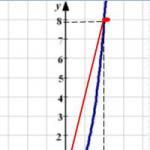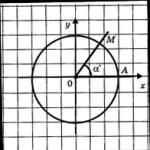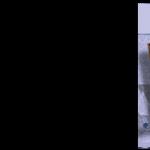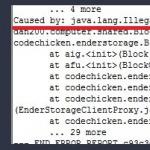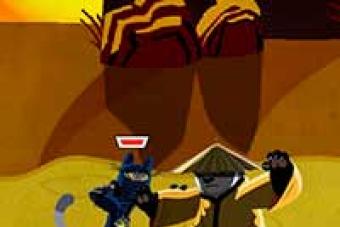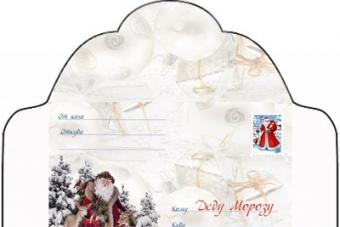Sermon on the Gospel Lk 4:21-30
At that time: Jesus began to say in the synagogue, Today this scripture is fulfilled in your hearing. And they all testified this to Him, and marveled at the words of grace that proceeded from His mouth, and said, Is this not Joseph's son? He said to them: Of course, you will say to Me a saying: “Doctor! heal yourself; do here, in your own country, what we have heard happened in Capernaum.” And he said, Truly I say to you, no prophet is accepted in his own country. Truly, I say to you, there were many widows in Israel in the days of Elijah, when heaven was shut up for three years and six months, so that there was a great famine throughout the whole earth; and to none of them was Elijah sent, but only to a widow in Zarephath of Sidon. There were also many lepers in Israel under the prophet Elisha; and none of them was cleansed except Naaman the Syrian. Hearing this, everyone in the synagogue was filled with rage. And they got up and drove him out of the city, and led him to the top of the mountain on which their city was built, to overthrow him; but he, passing through the midst of them, withdrew. (Luke 4:21-30)
Jesus can be called an honorary citizen of Nazareth. Because thanks to Jesus of Nazareth, this small city has become the most famous city in the world. No other city is mentioned so often. This name is written on each crucifix (INRI - Iesus Nazarenus Rex Iudaerum - Jesus of the Nazarene King of the Jews).
But I think the city of Nazareth was not worthy of such a citizen. Because he dealt very badly with Him. They kicked him out of the synagogue, kicked him out of the city, they wanted to kill him. Why? Everything started out so well. There was good news about Jesus, and when He came to Nazareth, He was received in the synagogue and listened to what He said. What happened? Jesus says, "Today this scripture is fulfilled." He talks about himself. The suggestion that God is speaking through someone he knows well is angering. People did not want to accept God as He revealed Himself. To this day, many people do not want to accept God as He is. They invent a god. Your convenient god. And they get annoyed when they hear about God as He is.
Every person was created by God and for God. Saint Augustine says: "You, O God, created us with a desire for You, and our heart is restless until it rests in You." Inside a person there is often a struggle between a constant desire for God and that which resists this attraction. These are the consequences of the fall of man. Before the fall, there was no conflict between God and man. But through Adam pride entered the man. The man decided that he could live without God, according to his own understanding.
Until today, many people suffer from the temptation of pride, which makes them miserable. People deny God, deny His Church, and do not acknowledge Jesus as their Lord and Savior. They kick Jesus out of their lives again. They each worship their own god, each creates an idol for himself, at his own discretion.
The same thing is happening today as it was then in Nazareth. Jesus is very familiar to us. We are used to hearing about Him. And we perceive it as something familiar. We deny Him the divine nature: "No prophet is accepted in his own country." And we come up with our own image of God. One that seems right to us. It is difficult for us to recognize the God who gave His life for us. False shame and pride interfere. It is easier for us to believe in our own fiction than in reality.
It is very important to accept God as He is. Let's read the Creed carefully. This is the confession of every Christian. What we are all called to believe.
I believe in one God, the Almighty Father, the Creator of heaven and earth, everything visible and invisible. And in one Lord Jesus Christ, the Only Begotten Son of God, born from the Father before all ages, God from God, Light from Light, true God from true God, begotten, uncreated, consubstantial with the Father; through whom all things were created. For the sake of us, people, and for the sake of our salvation, descended from heaven, and incarnated from the Holy Spirit and the Virgin Mary and became a Man; crucified for us under Pontius Pilate, suffering and buried, resurrected on the third day according to the Scriptures, ascended into heaven and sitting at the right hand of the Father, coming again with glory to judge the living and the dead, and His Kingdom will have no end. And in the Holy Spirit, the Lord, the Giver of Life, who proceeds from the Father and the Son, Who, together with the Father and the Son, deserves worship and glory, Who spoke through the prophets. And into one Holy Ecumenical and Apostolic Church. I confess one baptism for the remission of sins. I look forward to the resurrection of the dead and the life of the age to come.
In human culture, the cross has long been endowed with a sacred meaning. Many people consider it a faith, but this is far from the case. The ancient Egyptian ankh, the Assyrian and Babylonian symbols of the sun god are all variants of the cross, which were integral attributes of the pagan beliefs of peoples around the world. Even the South American tribes of Chibcha Muisca, one of the most advanced civilizations of that time, along with the Incas, Aztecs and Maya, used the cross in their rituals, believing that it protects a person from evil and personifies the forces of nature. In Christianity
the cross (Catholic, Protestant or Orthodox) is closely associated with the martyrdom of Jesus Christ.
Catholic and Protestant Cross
The image of the cross in Christianity is somewhat variable, since it often changed its appearance over time. The following types of Christian solar, Greek, Byzantine, Jerusalem, Orthodox, Latin, etc. are known. By the way, it is the latter that is currently used by representatives of two of the three main Christian movements (Protestantism and Catholicism). The Catholic cross differs from the Protestant one in the presence of the crucifixion of Jesus Christ. A similar phenomenon is explained by the fact that Protestants consider the cross a symbol of the shameful execution that the Savior had to accept. Indeed, in those ancient times, only criminals and thieves were sentenced to death by crucifixion. After his miraculous resurrection, Jesus ascended to Heaven, so Protestants consider placing a crucifixion with a living Savior on the cross as blasphemy and disrespect for the son of God.

Differences from the Orthodox cross
In Catholicism and Orthodoxy, the image of the cross has much more differences. So, if the Catholic cross (photo on the right) has a standard four-pointed shape, then the Orthodox one has six or eight-pointed ones, since it has a foot and a title. Another difference is manifested in the image itself. In Orthodoxy, the Savior is usually depicted triumphant over death. Spreading his arms wide, he embraces all those for whom he gave his life, as if to say that his death served a good purpose. In contrast, the Catholic cross with a crucifix is a martyr image of Christ. It serves as an eternal reminder to all believers of death and the anguish that preceded it, which the Son of God endured.

Cross of Saint Peter
The inverted Catholic cross in Western Christianity is by no means a sign of Satan, as third-rate horror films like to convince us. It is often used in and in the decoration of churches and is identified with one of the disciples of Jesus Christ. According to the assurances, the apostle Peter, considering himself unworthy to die like the Savior, preferred to be crucified upside down on an inverted cross. Hence its name - the cross of Peter. In various photographs, you can often see this Catholic cross, which from time to time causes unflattering accusations from the church in its connection with the Antichrist.
The creed in a concise form tells about the essence of religion. The Niceno-Constantinopolitan Creed, popular today in Christianity, was adopted at the First Ecumenical Council in Nicaea in 325, expanded and supplemented by the Second Ecumenical Council in Constantinople in 381. The Russian text in the interpretation of Orthodoxy (without the filioque “filioque”, that is, the Holy Spirit comes only from God the Father) looks like this:
“I believe in one God, the Almighty Father, the Creator of heaven and earth, of everything visible and invisible. And in one Lord Jesus Christ, the Son of God, the only begotten, begotten of the Father before all ages, Light from Light, true God from true God, begotten, not created, one being with the Father, through whom all things were created; for us people and for our salvation descended from heaven, took flesh from the Holy Spirit and Mary the Virgin and became a man, crucified for us under Pontius Pilate, suffered and was buried, rose on the third day in accordance with the writings (prophetic), ascended into heaven and sits at the right hand of the Father, and having to come again with glory to judge the living and the dead, whose kingdom will have no end. And in the Holy Spirit, the Lord, the giver of life, proceeding from the Father, worshiped and glorified equally with the Father and the Son, who spoke through the prophets. And into one, holy, universal and apostolic Church. I confess one baptism for the remission of sins. I look forward to the resurrection of the dead and the life of the age to come. Amen"
Almost all the principles of the Christian faith set forth in this Symbol are not disputed by most Christian denominations. Therefore, from the side of some believers of popular churches one can hear: "Since the Creed adopted at the councils is true, then all other decisions of the councils must also be considered true." However, the conclusions set forth in the Symbol can be drawn by any person who has carefully read New Testament. After all, all this is directly stated on its pages.
It should also be remembered that the Symbol was adopted at two Ecumenical Councils in 325 and 381. It is difficult to agree that the mere recognition of the obvious facts of biblical teaching at the first two Ecumenical Councils “automatically” consecrated all the other councils that adopted a host of other resolutions. As we have already seen, at subsequent Ecumenical Councils sometimes decisions were made that were far in spirit from the teachings of the Bible. And as we noted, the decisions of not all of their local councils are recognized by the churches themselves. And even more so, Christians of one denomination do not recognize councils held in other churches.
There are significant shortcomings in the Creed itself. One of the points of the Symbol reads: I believe in one Holy, Catholic and Apostolic church". Behind this seemingly correct statement lies a dangerous misconception. Look at what a person is called to here - to believe not in the inspiration of the teachings of the prophets and apostles, that is, the Bible, but to your church! The fact is that a believer who has been baptized in such a church becomes "bound" A symbol, which means that he does not even have the right to doubt the doctrinal postulates of his confession, otherwise excommunication will follow - anathema. For him, now any decision of the priests (until it is appealed to higher church authorities) is the truth, because they are representatives of " unified Holy, Catholic and Apostolic churches».
Also, for some reason, many Christians do not think that the thesis about unity has long since lost the meaning that was originally put into it. The symbol was adopted in the 4th century. It was then that he proclaimed: “I believe in one Holy, Catholic and Apostolic Church. And in the 5th century, the church began to divide: after the III Ecumenical Council of Ephesus in 431, the Assyrian Church of the East departed from a single church, after the IV Ecumenical Council of Chalcedon in 451, the so-called ancient Eastern churches broke away. And in the XI century, the skeleton of a single Christian church, which continued to be officially preserved for a long time, itself was divided in two. In 1054, the church split into two independent confessions, Catholicism and Orthodoxy, with different creeds, liturgical charters, canons and calendars. Moreover, even the Christian world did not become between them, not to mention love. Moreover, they cursed each other, sending mutual anathemas to rivals. And then they killed each other.
All Russians remember Alexander Nevsky well, who defeated the crusaders twice in the 13th century. But many do not know that these wars were the crusades of the papacy. If first Crusades were of a "missionary" predatory nature for the conversion of pagans to Christianity, then later, the Christian brothers had to defend themselves from the pope's troops. In the Battle of the Neva (1240) and during the Battle of the Ice (1242), Orthodoxy defended itself against the attempts of Catholicism to establish its power over the lands of Russia. He knows the history and other examples of military confrontation between these two world Christian denominations.
In this way, unified The Christian Church is long gone. Therefore, since the time of the schism, the Orthodox and Catholic churches have changed their approach to the thesis of the Creed about unity. Now everyone refers it only to themselves.
Moreover, Catholicism has a little more reason be called "one". Its integrity was violated only by the Protestants who left the church. But today Catholicism, as before, is united. From Orthodoxy, firstly, the flock also left and is leaving for Protestantism. Secondly, there was a major split in Orthodoxy in Russia - the Old Believers left the church, who did not accept the reform of Patriarch Nikon in 1650-1660. Thirdly, and, probably, this is the main thing, in contrast to a single Catholicism, Orthodoxy today consists of 15 (!) Autocephalous churches: Constantinople, Alexandria, Antioch, Jerusalem, Russian, Georgian, Serbian, Romanian, Bulgarian, Cypriot, Helladic , Albanian, Polish, American, Czech lands and Slovakia. Each of these churches is isolated and independent. In the autocephalous Orthodox churches there is no single center, there is no subordination, there are no Ecumenical Orthodox Councils with the participation of plenipotentiaries of all 15 autocephalous, but there are differences in doctrine, worship, and even different calendars are used (Julian, New Julian, and in the Finnish Orthodox Autonomous Church - Gregorian).
Until now, Orthodoxy and Catholicism continue to claim that it is their church that is unified which is mentioned in the Creed. And the other is a “handle” that fell off the cups. And no one wants to think that the concept of "single" cannot be applied to only one confession. If the dogmas of Catholicism are right, then what about Orthodox Christians? And vice versa. After all, there cannot be two truths - there is only one truth! This means that the second, who are wrong, are no longer Christians, since they do not belong to the Creed proclaimed in the Creed. unified churches!? That is, for all parishioners of the "wrong" church (either Catholic or Orthodox) no escape?! But what about the ancient Eastern Orthodox, Eastern Catholic and other churches that doctrinally stand "between" Orthodoxy and Catholicism? And what about the Protestant denominations? Think, because in all the listed churches there are many parishioners who love God and try to fulfill His will, which they think they hear from the lips of their shepherds. How to be with them - living, God-seeking people?
In fact, if you carefully read the Bible, everything falls into place. In the New Testament, the church is called people who believe in Christ who are together are going in His name: "Where two or three are gathered in my name, there I am in the midst of them» (Matthew 18:20). The word church in the original New Testament is represented by the Greek word εκκλησια (ecclesia), meaning a gathering of people, meeting. This is easy to check. I do not speak Greek or Hebrew, but I use Strong's dictionary and Aleksey Vinokurov's interlinear translation of the Bible, which sometimes help a lot to understand the meaning of the texts of Holy Scripture. These two word-for-word translations of the Bible from the original are now available to everyone on the Internet at www.bible.in.ua, www.jesuschrist.ru and other portals.
The true meaning of the word "church" was well known to the Christians of the first centuries. This is how the early Christian theologian Archbishop of Constantinople John Chrysostom (347 - 407) wrote about the church in his work "Conversation before going into exile":
“But is the Church within the walls? The Church is in the multitude of believers.
The united church in the New Testament is described as the Body of Christ, consisting of the head - Jesus Christ - and all Christians - members of the body, having different gifts and callings from God:
"He(Jesus. - Approx. Aut.) have a chapter body Churches"(Col. 1:18).
"We, many, make up one body in Christ, and separately one for the other members» (Rom. 12:5).
"You - body of christ, a separately - members. God placed others in the Church, firstly, as apostles, secondly, as prophets, thirdly, as teachers; further, he gave miraculous powers to others, also gifts of healing, help, control, different languages» (1 Cor. 12:27,28, see also 1 Cor. 12:12-26, Eph. 3:6, Col. 1:24, John 10:16).
The schisms proved once and for all that any one Christian denomination cannot claim the right to be called one church. But one world Christian church, consisting of individual Christians who love God and try to do His will, regardless of their belonging to any Christian denomination.
Credo, or Creed
The origin of the modern Creed is the so-called Apostles' Creed. It originally arose from the baptismal formula, and all its provisions were drawn from the apostolic epistles. But in order to strengthen the unity of faith of the ancient Christian communities, which was under the threat of antitrinitarian heresies, a more extensive Creed, or Creed (from lat. Credo- I believe), professed in Catholicism. This Creed was elaborated at the first two ecumenical councils, Nicea (325) and First Constantinople (381), hence its name - Niceno-Constantinople. Except for the formula filioque, it is recognized by all Christian churches.
According to the Creed, consisting of 12 members (points), the Catholic Church recognizes the Trinity of God (Trinity), the doctrine of the saving mission of Jesus Christ, the coming resurrection of the dead and the Last Judgment, the saving role of the Church.
The text of the Creed, which is read at the liturgy during the Eucharist, is as follows:
into one God, Almighty Father,
Creator of heaven and earth
the visible and the invisible.
And in one Lord Jesus Christ,
Son of God, the Only Begotten,
from the Father, born before all ages,
God from God
Light from Light
true God from true God,
begotten, uncreated, consubstantial with the Father
through Him all things were created.
For us humans and our salvation
descended from heaven
and incarnate of the Holy Spirit and the Virgin Mary,
and incarnated.
crucified for us under Pontius Pilate,
and suffering,
and buried
and rose again on the third day according to the Scriptures,
and ascended into heaven
and seated at the right hand of the Father,
and coming again with glory
judge the dead and the living,
and His kingdom will have no end.
And in the Holy Spirit
life-giving Lord,
From the Son and the Father who proceeds,
instead of with the Father and the Son of the one who is worshipped
and famous
who spoke through the prophets.
And into one holy universal
and the apostolic church.
I confess one baptism for the remission of sins.
Waiting for the resurrection of the dead
and the life of the next century. Amen.
Along with Niceno-Constantinopolitan, the Catholic Church also recognizes the so-called Athanasian Creed. It consists of 40 members. Previously, Athanasius the Great (295-373) was considered its creator, but now the Catholic Church recognizes its later origin. At present, the Athanasian Creed is read only on the feast of the Trinity. Medieval theologians used it in disputes with Orthodoxy to confirm the truth of the doctrine of the Filioque.
From the book of the Eucharist author Kern CyprianSymbol of faith. The deacon, after kissing the world, proclaims: "Doors, doors, let us attend to wisdom." The word "wisdom" is not found in the manuscripts of the ninth century. In ancient times, these words referred to goalkeepers, special clergymen appointed to ensure that none of the infidels or
From the book The Beginning of the Christian Way author Borisov, priest AlexanderCreed I believe in one God the Father, Almighty, Creator of heaven and earth, visible to all and invisible. And in one Lord Jesus Christ, the Son of God, the only begotten, even from the Father begotten before all ages: Light from Light, True God from True God, begotten, not created,
From the book The Law of God author Sloboda Archpriest SeraphimThe Creed The Creed is a brief and precise statement of all the truths of the Christian faith, compiled and approved on the 1st and 2nd Ecumenical Councils. And whoever does not accept these truths can no longer be an Orthodox Christian. The entire creed consists of
From the book Orthodoxy author Titov Vladimir EliseevichThe creed According to the theological point of view, the creed of a particular religious trend is summary the main provisions that do not require proof (dogmas), as objects perceived by pure faith. Currently
From the book 1115 questions to the priest author PravoslavieRu website sectionWhich is correct: “Credo quo absurdum est” or “Credo qua absurdum est” (“I believe contrary to reason” (Tertullian))? Hieromonk Job (Gumerov) Correct: “Credo quia absurdum est” (“I believe because it is absurd”). This aphorism represents a later interpretation. The famous apologist has a different formula: “Credibile quia
From the book The Church is One author Khomyakov Alexey Stepanovich7. Creed The Holy Church confesses her faith throughout her life: by the teaching that is inspired by the Holy Spirit, by the sacraments in which the Holy Spirit acts, and by the rites which He also governs. For the most part, the confession of faith is called the Symbol
From the book Handbook of an Orthodox Man. Part 2. Sacraments of the Orthodox Church author Ponomarev VyacheslavCreed in Church Slavonic1. I believe in one God the Father, Almighty, Creator of heaven and earth, visible to all and invisible.2. And in one Lord Jesus Christ, the Son of God, the Only Begotten, Who was born from the Father before all ages: Light from Light, true God from true God,
From the Liturgical Book author (Taushev) AverkyCreed The deacon, bowing his head a little, stands on the same spot, kisses his orarium, where there is an image of the cross, and raises his small right hand, holding the orary with three fingers, proclaims: Doors, doors, let us attend to wisdom. At the same time, the veil on the royal doors is pulled back, people say
From the book Cure for Sorrow and Comfort in Despondency. Prayers and amulets author Isaeva Elena LvovnaSymbol of faith I believe in one God the Father Almighty, the Creator of heaven and earth, visible to all and invisible. And in one Lord Jesus Christ, the Son of God, the Only Begotten, who was born of the Father before all ages; Light from Light, true God from true God, born, uncreated,
From the book The Seven Deadly Sins. Punishment and repentance author Isaeva Elena Lvovna From the book Divine Liturgy: Explanation of the meaning, meaning, content author Uminsky Archpriest AlexeyCreed The Great Entrance ends, the Royal Doors are closed, the veil is drawn. With a petitionary litany, the Church begins to prepare those praying for the celebration of the Sacrament of the Eucharist: “For the offered honest gifts let us pray to the Lord.” At this time, the priest secretly reads
From the book Prayer Book author Gopachenko Alexander MikhailovichCreed 1. I believe in the One God the Father, Almighty, Creator of Heaven and Earth, visible to all and invisible. In the first member of the creed, we learn to believe in God the Father, who created the world and governs it. God is one in essence, but trinity in persons: God the Father, God the Son and the Holy Spirit;
From the book of Prayer to Matronushka. God's help for all occasions authorCreed I believe in one God the Father, Almighty, Creator of heaven and earth, visible to all and invisible. And in one Lord Jesus Christ, the Son of God, the Only Begotten, Who was born from the Father before all ages; Light from Light, true God from true God, born, uncreated,
From the book The Power of Orthodox Prayer. For what, how and to whom you need to pray author Izmailov Vladimir Alexandrovich"The Symbol of Faith" To believe in God means to have sincere confidence in His existence, to accept Him with all one's heart, to submit to His divine will. It is these basic provisions that lie in the prayer "Creed". This is a concise and clear statement of what should
From the book Fundamentals of Orthodoxy author Nikulina Elena NikolaevnaThe Creed The Creed is a summary of the most important truths of Christianity. The Church, represented by Orthodox Christians, confesses its faith by pronouncing the Creed at the Divine Liturgy and during the celebration of the Sacrament of Baptism. The historical need for the Creed
From the book God help you. Prayers for life, health and happiness author Oleinikova Taisiya StepanovnaCreed I believe in one God the Father, Almighty, Creator of heaven and earth, visible to all and invisible. And in one Lord Jesus Christ, the Son of God, the Only Begotten, who was born of the Father before all ages; Light from Light, true God from true God, born, uncreated,
It would seem that Christianity assumes the same symbols, but despite this, the Catholic cross and Orthodox crosses have a significant difference. Attributes of religion are different for each religious movement. In this article, you will be able to learn how to identify the Orthodox and Catholic cross.
History of Catholicism
As a separate trend of Christianity, it separated back in 1054. It happened after the “Great Schism”, when the Pope and the Patriarch anathematized each other. The followers also divided into two "camps" and since then, Catholicism has been considered a separate religious movement.
Like the Orthodox, they have their own symbols and attributes that symbolize their faith. Catholicism is considered one of the most widespread religions on the planet. In Europe, most countries are under the control and the strongest influence of the church on people's lives. For example, Poland, Belgium, Italy and others. Most of the Catholics are in the Americas.
Meaning
As for the Orthodox, for Catholics, the cross means liberation and a symbol of the victory of good over evil. It can be interpreted as an attribute of the eternal afterlife. The cross also symbolizes hope and faith - this is its main purpose. A person receives it as a sign that he is committed to a particular church.
There is also a cross of St. Peter, which can symbolize faith in Christianity. It does not at all symbolize Satanism or blasphemy, but is one of the varieties of the Catholic cross. It is worth noting that this is an ordinary Latin inverted cross. You can find many different crosses that are used not only by Catholics, but also by Orthodox.
Each of the varieties symbolizes belonging to the church, and is also highly revered by the Christian church. It is worth noting that Catholics have an ordinary cross and a Papal cross, which differ in the number of ends. The papal is a triple board, as a priest of the highest rank. He is higher than everyone else, as he is more committed to the Lord and can send his prayers directly.
The difference between the Orthodox cross and the Catholic
On the Catholic cross, special attention is given to the image of Christ on the crucifix, and not to the number of crossbars or other symbols. The cross, as for the Orthodox, plays important role among Catholics and their faith.
To cover this topic in more detail, let's turn to the most important details that both crosses have and they may have differences. This:
- Form;
- inscriptions;
- Location of Christ himself;
- Number of nails on the cross
Form
The main difference that exists is the number of ends. In Orthodoxy - eight or six, and in Catholicism - four. At the same time, both churches recognize that faith does not depend on the number of crossbars, it is just a symbol that shows a person's commitment to religion.
The Catholic Church, like the Orthodox Church, recognizes both types. On the Orthodox cross there is an upper crossbar, which symbolizes the repentance of the robber, as well as an upper plate with a name. But at the same time, ancient Christian church recognized only one form of the cross - quadrangular. References to this can be found in the catacombs where Christians were during the persecution. Also in Catholicism and Orthodoxy, you can find the hexagonal shape of the cross, which is also true.
Image of Jesus Christ
The Catholic view of the cross is the closest to reality. On it you can find images of Christ, where his fingers are folded into a fist. This symbolizes the torment that he endured. Some crosses may depict blood or some other attributes of unbearable pain and repentance.
It is the location of Christ on the crucifix that causes the most controversy among both churches. The shape and location on the Catholic cross speaks of the pain and torment that the Savior endured. As mentioned earlier, blood and a certain expression on the face of Christ can be depicted. Traditionally, in Orthodox Church the cross stands for salvation and eternal love, which Christ brings to his followers and to the whole world. Orthodoxy also explains that the Savior depicted on their cross shows that immortal life exists and after death it does not end, but simply passes into another form. Until one time, not only the living Christ was depicted on the crosses, but triumphant, ready to enter into new life already cleansed and redeemed. Only from the tenth century did images of the already dead Savior appear, and various attributes of his death began to be depicted.
inscriptions
There are other minor differences that can be found in both species. You can also find differences on the plate, which is located at the top of the cross. When the Orthodox have it - IHЦI (or ІННІ, "Jesus Nazarene, King of the Jews"), and for Catholics in Latin - INRI. On the Catholic cross there is no inscription "Save and save", while on the Orthodox one it is on the back.
Nails
The number of nails plays an important role in the depiction of Christ on the crucifix. On Catholic crosses, the feet of the Lord are nailed with just one nail, and on Orthodox ones, with two. This is standard appearance Catholic cross, which is kept in the Vatican.
If the theme of the form was described in more detail above, then it is worth adding that the image of the Catholic cross is made in a more restrained form. Like the very decoration of Catholic churches, the cross is without unnecessary details and special decoration.

Conclusion
Regardless of which cross a person prefers, it is a direct symbol of the fact that he knows about the torment of Christ and is committed to a certain religious movement. The priests themselves do not give an accurate assessment of if a person takes off an Orthodox one and puts on a Catholic one. That is why adherents of both churches can wear crosses different shapes without worrying about your faith. The material of manufacture of the Catholic symbol does not matter, it can be gold, silver, wood or something else.
This is the most important symbol, recognized not only in our time, but also a dozen centuries before us. "The cross is the guardian of the whole universe."- affirms the holy feast of the Life-Giving Cross. The main differences are only in their form, and not in the power of love for the Lord of man.
